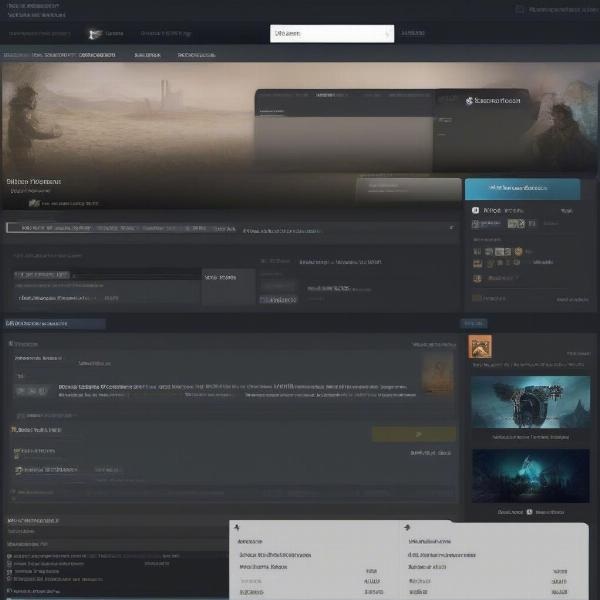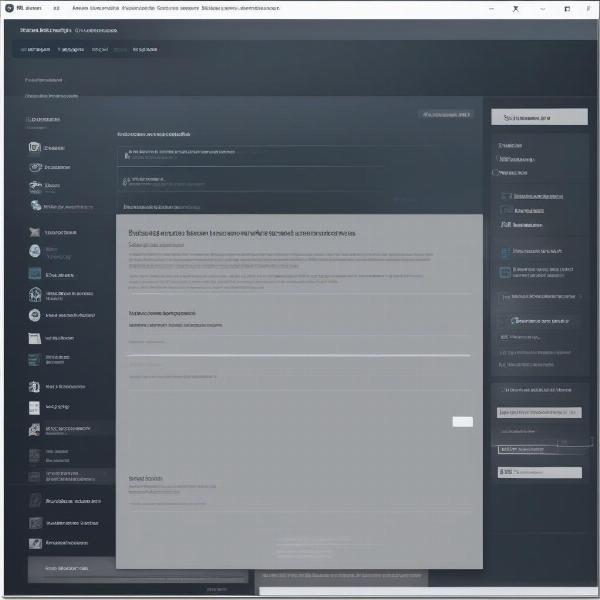Ever wondered exactly how much you’ve invested in your Steam library? It’s a question many gamers ponder, often with a mix of curiosity and trepidation. Here at supremeduelist.blog, we understand the need to track your gaming expenses. This article will guide you through the process of accessing your Steam purchase history, providing clarity on your digital spending habits.
We will explore the different methods of finding this information, discuss what this data reveals about your gaming journey, and address common questions about managing your Steam account. Whether you’re looking to budget better or simply satisfy your curiosity, understanding your purchase history is key to managing your digital life.
Accessing Your Steam Purchase History
The most straightforward way to see how much you’ve paid for your Steam games is through the Steam client or website. Valve provides an accessible interface for viewing all your transactions, dating back to your first purchase on the platform.
To access this information:
- Open the Steam client or website: Log in to your account.
- Go to Account Details: On the Steam client, click on your username, then “Account details”. On the website, click on your username at the top right, then “Account Details”.
- View Purchase History: Look for an option labeled “View purchase history” or something similar. This should take you to a comprehensive list of your transactions.
The purchase history page lists all your transactions, including game purchases, downloadable content (DLC), software, and even in-game items bought through the Steam marketplace. Each entry will include:
- The date of purchase
- The item purchased
- The price you paid
- The payment method used
- A transaction ID
 Steam purchase history page showing transactions
Steam purchase history page showing transactions
Understanding Your Steam Spending Data
Once you have access to your purchase history, you can start to analyze your spending habits. Steam allows you to sort and filter your transactions, which can be extremely useful for gaining deeper insights. For example, you can sort purchases by date to see how your gaming spending has evolved over time or filter by game title to see your total investment in a particular title.
Analyzing your Steam spending can reveal a lot about your gaming preferences. Do you tend to splurge on AAA titles right at release, or do you prefer to wait for sales? Are you drawn to specific genres, or do your purchases reflect a diverse range of games? This information can be invaluable for making informed decisions about future purchases and budgeting your gaming expenses effectively.
Furthermore, tracking your spending can also help you identify potential spending leaks. Often, we might forget the smaller impulse purchases, such as cosmetic items or DLC. Seeing the accumulation of these costs over time can provide a clear picture of where your money is going, allowing you to make adjustments to your spending habits.
Steam Wallet vs. Direct Purchases
It’s important to differentiate between purchases made directly with a payment method and those funded through your Steam wallet. Both types of transactions will appear in your purchase history, but it can be useful to track how much you are adding to your Steam wallet over time as well. This provides a comprehensive view of all the money you have funnelled into the platform.
Why Track Your Steam Spending?
Understanding your spending habits on Steam is crucial for several reasons:
- Budgeting: It helps you understand how much you’re allocating to gaming and allows for setting realistic budgets.
- Identifying Spending Patterns: Recognize if you’re spending too much on impulse buys or certain types of games.
- Financial Planning: It aids in managing your finances by providing a clear overview of your digital entertainment expenses.
- Making Informed Choices: You can make more informed choices about future game purchases based on your spending patterns and preferences.
According to Marcus Thorne, a financial analyst specializing in digital entertainment, “Keeping track of your Steam spending is no different from monitoring any other entertainment expense. It empowers gamers to make more informed choices and manage their finances effectively. Awareness is the first step toward responsible spending.”
Frequently Asked Questions about Steam Purchase History
Let’s dive into some frequently asked questions about managing and understanding your Steam purchase history:
Can I filter my Steam purchase history?
Yes, Steam allows you to filter your purchase history by the date and type of transaction. This makes it easy to see your recent purchases or those from a specific period.
Can I export my Steam purchase history?
Unfortunately, Steam does not offer a direct export feature for your purchase history. You will have to manually copy the data or utilize third-party tools if you want to store the information elsewhere.
Can I get a refund for a Steam game?
Steam has a refund policy that allows you to request a refund for a game within two weeks of purchase and if you have played less than two hours. Check out the Steam support page for all the details.
What if a transaction is missing from my Steam purchase history?
Generally, all transactions are recorded. If you believe a transaction is missing, contact Steam support to investigate. It’s best to have any relevant receipts or confirmation emails available.
Is my Steam purchase history secure?
Your Steam purchase history is tied to your Steam account and is secured by your username and password. Enable Steam Guard for added security.
 Steam Account Security Options Page
Steam Account Security Options Page
Can anyone else see my Steam purchase history?
No, your Steam purchase history is private to your account and cannot be seen by other users unless you give them access to your account.
Other Ways to Manage Your Steam Spending
Beyond simply viewing your purchase history, there are other ways to manage your Steam spending:
- Set a Budget: Decide on a monthly or weekly amount you’re comfortable spending on games.
- Utilize the Steam Wishlist: Add games to your wishlist and wait for them to go on sale rather than making impulse buys.
- Read Reviews: Before purchasing a game, read reviews to make sure it is worth your investment.
- Use Sale Notifications: Set up notifications on Steam and other game websites to be alerted to upcoming sales.
- Consider Bundles: Bundles can often provide great value, allowing you to get multiple games for the price of one or two individual titles.
“It’s important for gamers to remember that a vast library of games doesn’t necessarily equate to more enjoyment. Sometimes it’s better to be more selective and focus on playing the games you love. It’s about quality, not quantity,” says Dr. Anya Sharma, a gaming psychologist.
Are there any third-party tools for Steam spending analysis?
While Steam does not officially endorse third-party tools, several applications claim to provide a more in-depth analysis of your Steam spending habits. However, be very careful when using these tools and ensure they are reputable to avoid compromising your account security.
Conclusion
Understanding how to access and analyze your Steam purchase history is essential for any gamer looking to manage their expenses effectively. By following the steps outlined in this article, you can gain valuable insights into your spending habits, make informed purchasing decisions, and ensure your gaming budget remains within your control. Here at supremeduelist.blog, we are committed to empowering gamers with the tools they need to make the most of their digital experiences. Remember to check back regularly for more tips, tricks, and insights into the world of gaming! Knowing “Can I See How Much I Paid For Steam Games” is more than just satisfying curiosity – it’s about financial awareness and responsible gaming.
Leave a Reply